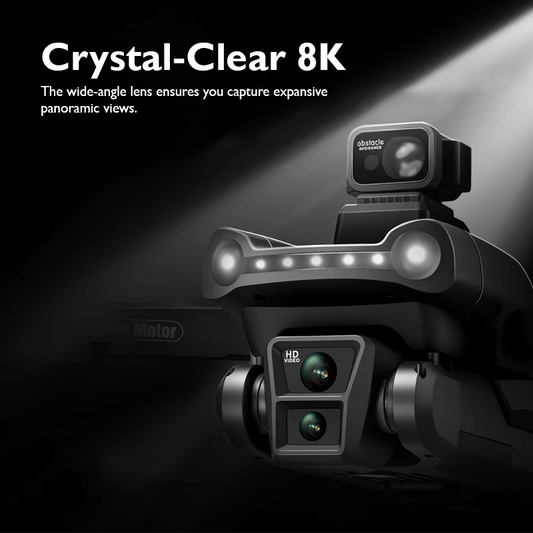Shooting in Low Light with Drones: Overcoming Challenges
Capturing breathtaking aerial footage with drones has revolutionized photography and videography, but shooting in low light presents unique challenges. Whether you're a hobbyist or a professional, mastering low light drone photography can significantly enhance your creative possibilities. This guide explores essential tips and techniques to help you overcome the challenges of shooting in low light with drones.
Understanding the Challenges
Low light conditions pose several obstacles for drone photographers. Drones typically have smaller image sensors compared to traditional cameras, which can result in more noise and less detail in low light environments. Additionally, limited ambient light makes it difficult for the drone's autofocus system to work effectively, leading to potential focus issues in your footage.
Essential Equipment and Settings

Choosing the right equipment and settings is crucial for successful low light drone photography. Start by selecting a drone with a high-quality camera that performs well in low light. Look for models with larger sensors and advanced imaging capabilities.
Adjusting your drone's camera settings is equally important. Begin by setting a lower shutter speed to allow more light into the sensor. However, be cautious of motion blur caused by drone movement. Increasing the ISO sensitivity can also brighten your images, but too high an ISO can introduce grainy or noisy textures. Strike a balance between these settings to achieve clear and vibrant low light shots.
Leveraging Drone Techniques
Mastering specific drone techniques can greatly enhance your low light photography results. One effective method is using manual focus instead of relying on autofocus, especially in dimly lit environments where autofocus may struggle. Take advantage of the drone's manual focus feature to ensure sharp and crisp images.
Experimenting with exposure bracketing can also yield impressive results in low light. This technique involves taking multiple shots at different exposure levels and combining them later during post-processing to create a well-exposed image with enhanced details in both shadows and highlights.
Optimizing Post-Processing
Post-processing plays a crucial role in refining your low light drone shots. Use software like Adobe Lightroom or Photoshop to adjust exposure, reduce noise, and fine-tune colors. Pay particular attention to noise reduction techniques to maintain image clarity while minimizing unwanted graininess.
Choosing the Right Time and Location

Timing and location are key factors for successful low light drone photography. Plan your shoot during the golden hours—just after sunrise or before sunset—when natural light is soft and warm, providing ideal conditions for capturing dramatic aerial shots. Alternatively, experiment with nighttime photography to create stunning light trails and cityscape views.
When selecting a location, consider environments with minimal artificial light pollution to avoid unwanted glare and ensure better visibility of stars and other natural low light elements.
Shooting in low light with drones presents exciting opportunities for capturing unique and atmospheric aerial footage. By understanding the challenges, selecting the right equipment and settings, mastering drone techniques, optimizing post-processing, and choosing optimal timing and locations, you can overcome these challenges and create visually stunning images that stand out.
Whether you're exploring the beauty of a city skyline at dusk or capturing the tranquility of a starlit landscape, mastering low light drone photography will expand your creative horizons and elevate your drone photography skills to new heights.
Explore a variety of drones at our online drone store.
Happy Flying!










